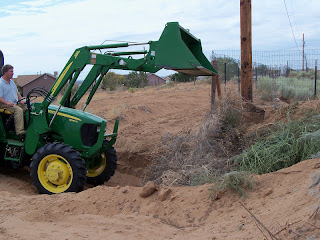 I met Charlie on a trip to Mount Rainier’s summit. During the ascent, and subsequent overnight on the summit, it became clear to me that Charlie had a vision of his life. As a young man about to finish college, Charlie was amassing the skills and experiences to lead the life of an accomplished climber. I recognized the love and passion, and from that time on the summit, knew that mountains were going to be a big part of Charlie.
I met Charlie on a trip to Mount Rainier’s summit. During the ascent, and subsequent overnight on the summit, it became clear to me that Charlie had a vision of his life. As a young man about to finish college, Charlie was amassing the skills and experiences to lead the life of an accomplished climber. I recognized the love and passion, and from that time on the summit, knew that mountains were going to be a big part of Charlie.For the next four years, I witnessed Charlie develop as both a mountain climber and a park ranger. When it came to climbing, I can confidently say that few pursued the sport with as much diligence. He simply loved rock climbing and mountaineering, AND he was quite good at it. Physical and strong, Charlie moved through the mountains, over the rock, or up the ice with grace and confidence. He chose climbing routes that were beautiful, technical and challenging. He recently commented that in the last year he had done more climbing than most people in do in a lifetime… And if you spent much time with Charlie, you knew this was true.
 Charlie served as a National Park Service Climbing Ranger. He started as a volunteer at Camp Schurman, but quickly climbed the ranks to become a lead climbing ranger on Mount Rainier. Charlie’s assignments as a climbing ranger required him to delicately mix intense physical ability with sound judgment and excellent decision making. The job was adventurous and dynamic and that seemed to suit Charlie well. So well in fact, that he took assignments at Yosemite on the prestigous search and rescue team in Camp 4.
Charlie served as a National Park Service Climbing Ranger. He started as a volunteer at Camp Schurman, but quickly climbed the ranks to become a lead climbing ranger on Mount Rainier. Charlie’s assignments as a climbing ranger required him to delicately mix intense physical ability with sound judgment and excellent decision making. The job was adventurous and dynamic and that seemed to suit Charlie well. So well in fact, that he took assignments at Yosemite on the prestigous search and rescue team in Camp 4.On Mount Rainier, he led climbing patrols and rescues. On more than one occasion, Charlie risked his life to save another. He didn’t do this carelessly, but purposefully and with confidence. He was an important part of our team, and I trusted him implicitly. Which was something he seemed to enjoy, trust. In fact, I say that Charlie blossomed when trusted, and the responsibility that came with it.
Maybe most impressively, was the simplicity at which Charlie enabled himself. He pursued a challenging path for his life and it was inspiring to watch. Charlie succeeded at most anything he set his mind to, and in succeeding, he led and motivated others to do the same. He made choices that reflected his soul and passion; he was living his life with purpose and direction, things that we all can look up to.
Here are few links to stories about Charlie. Charlie Borgh loved climbing, despite danger. These two require free registration but tell the story of a dramatic rescue in 2004 that Charlie took part in. In the Seattle PI, Injured climber dies after rescue and in the Seattle Times, Injured mountain climber dies after daring rescue.
Information about the accident was posted here. In the next few days, I'll put more up about Gabe Coler, Mount Deltaform and a Pacific NW memorial for Charlie.



 went for a walk on the desert the other day and saw some interesting plants. The dogs trailed something that was most likely a rabbit. Was a nice day.
went for a walk on the desert the other day and saw some interesting plants. The dogs trailed something that was most likely a rabbit. Was a nice day.




















 The last Iris bloom.
The last Iris bloom.  And a promise of things to come. Lovely Lillies.
And a promise of things to come. Lovely Lillies.

 I've been counting down the days for something exciting-my dear friend Barb and her husband John coming to camp with us. We met them at the Pea Island Wildlife Refuge and wandered around for a short time. A very short time compared to how long we probably both would have stayed because the mosquitoes were out in killer force even with bug spray on. It is a beautiful refuge from what we did see and we saw a few birds while there.
I've been counting down the days for something exciting-my dear friend Barb and her husband John coming to camp with us. We met them at the Pea Island Wildlife Refuge and wandered around for a short time. A very short time compared to how long we probably both would have stayed because the mosquitoes were out in killer force even with bug spray on. It is a beautiful refuge from what we did see and we saw a few birds while there.


